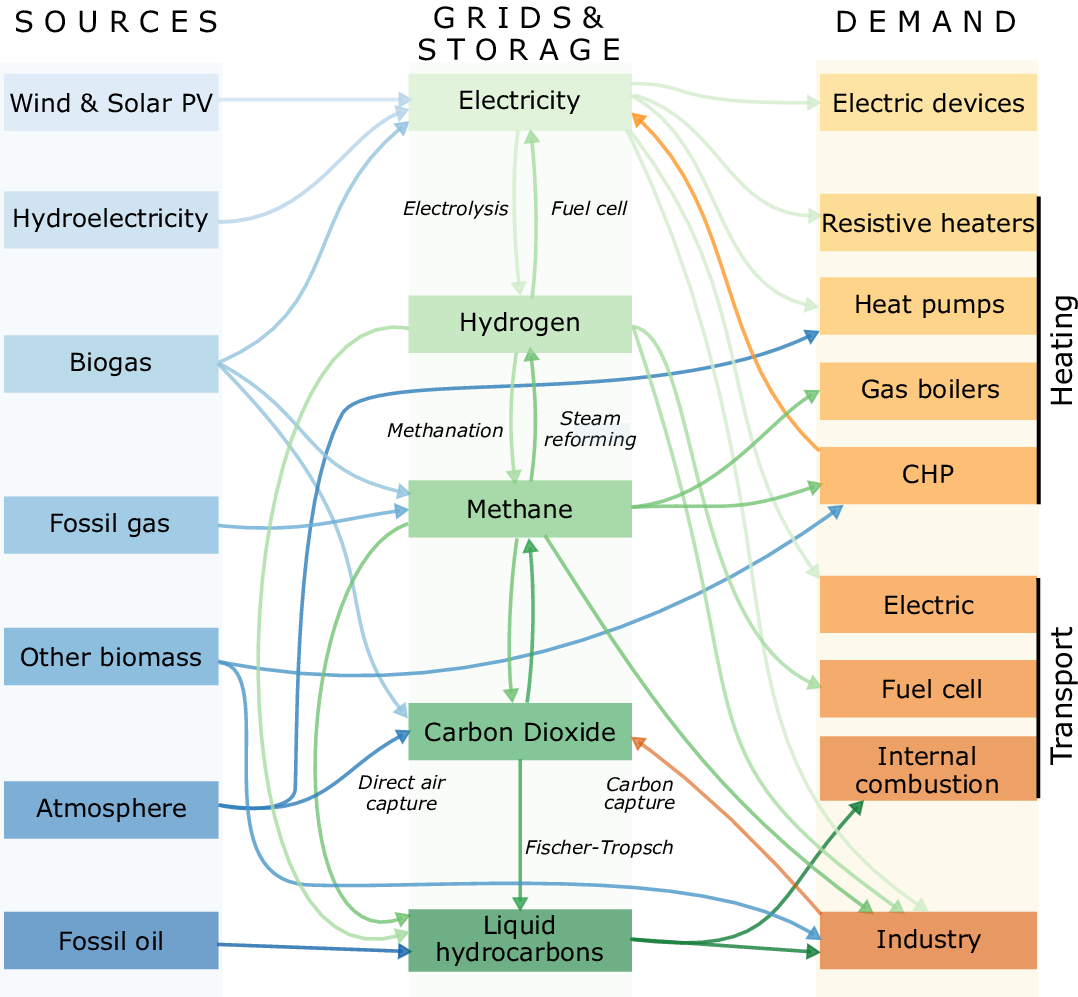3.5 KiB
PyPSA-Eur-Sec: A Sector-Coupled Open Optimisation Model of the European Energy System
WARNING: This model is under construction and contains serious problems that distort the results. See the github repository issues for some of the problems (please feel free to help or make suggestions). There is neither documentation nor a paper yet, but we hope to have a preprint out by summer 2020. We cannot support this model if you choose to use it.
PyPSA-Eur-Sec builds on the electricity generation and transmission model PyPSA-Eur to add demand and supply for the following sectors: transport, space and water heating, biomass, industry and industrial feedstocks. This completes the energy system and includes all greenhouse gas emitters except waste management, agriculture, forestry and land use.
This diagram gives an overview of the sectors and the links between them:
PyPSA-Eur-Sec was initially based on the model PyPSA-Eur-Sec-30 described in the paper Synergies of sector coupling and transmission reinforcement in a cost-optimised, highly renewable European energy system (2018) but it differs by being based on the higher resolution electricity transmission model PyPSA-Eur rather than a one-node-per-country model, and by including biomass, industry, industrial feedstocks, aviation, shipping, better carbon management, carbon capture and usage/sequestration, and gas networks.
PyPSA-Eur-Sec includes PyPSA-Eur as a snakemake subworkflow. PyPSA-Eur-Sec uses PyPSA-Eur to build the clustered transmission model along with wind, solar PV and hydroelectricity potentials and time series. Then PyPSA-Eur-Sec adds other conventional generators, storage units and the additional sectors.
Currently the scripts to solve and process the resulting PyPSA models are also included in PyPSA-Eur-Sec, although they could in future be better integrated with the corresponding scripts in PyPSA-Eur. A stumbling block to sharing solve_network.py between PyPSA-Eur and PyPSA-Eur-Sec is the different extra_functionality required to build storage and CHP constraints.
Installation
First install PyPSA-Eur and all its dependencies. Clone the repository:
projects % git clone git@github.com:PyPSA/pypsa-eur.git
then download and unpack all the data files.
Create a parallel directory for PyPSA-Eur-Sec with:
projects % git clone git@github.com:nworbmot/pypsa-eur-sec.git
Package requirements
The requirements are the same as
PyPSA-Eur, but for
solve_network.py in addition you need gurobipy and version 0.16.1
or greater of PyPSA in order to use the nomopyomo framework.
Data requirements
The data requirements include the JRC-IDEES-2015 database, JRC biomass potentials, EEA emission statistics, Eurostat Energy Balances, urban district heating potentials, emobility statistics, timezone mappings and heating profiles.
The data bundle is about 640 MB.
To download and extract it on the command line:
projects/pypsa-eur-sec/data % wget "https://nworbmot.org/pypsa-eur-sec-data-bundle-190719.tar.gz"
projects/pypsa-eur-sec/data % tar xvzf pypsa-eur-sec-data-bundle-190719.tar.gz
